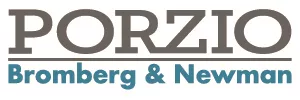- within Cannabis & Hemp topic(s)
On March 20, 2024, Governor Murphy signed into law P.L.2024, c.2, which establishes a new statutory framework for calculating and enforcing municipal affordable housing obligations in New Jersey. This legislation aligns with the Mount Laurel doctrine and the Fair Housing Act, and empowers the New Jersey Department of Community Affairs (DCA) to determine regional housing needs and assign present and future obligations to municipalities using formulas prescribed by the new law.
The DCA published its initial findings outlining its methodology for calculating both Present Need and Prospective Need in accordance with the criteria set forth in the Affordable Housing Law. Present Need is determined by the number of substandard existing deficient housing units currently occupied by low- and moderate-income households. Prospective Need, however, is based on projected household growth over a 10-year period, using data from the two most recent federal decennial censuses (2010 and 2020). DCA utilized primary source data reported at the municipal level to capture local variation in housing stock characteristics and the distribution of low- and moderate-income households.
Based on its analysis, DCA determined that the Present Need statewide is 65,410 low- and moderate-income housing units, allocated across six housing regions as follows:
|
Housing Region |
Counties |
Present Need |
|
Region 1 |
Bergen, Hudson, Passaic, Sussex |
23,741 |
|
Region 2 |
Essex, Morris, Union, Warren |
18,547 |
|
Region 3 |
Hunterdon, Middlesex, Somerset |
7,073 |
|
Region 4 |
Mercer, Monmouth, Ocean |
6,721 |
|
Region 5 |
Burlington, Camden, Gloucester |
5,927 |
|
Region 6 |
Atlantic, Cape May, Cumberland, Salem |
3,401 |
|
Statewide Total |
65,410 |
In determining Prospective Need, the DCA concluded that municipal obligations are expected to rise during the subsequent 10-year period. Specifically, DCA has determined that the total Regional Prospective Need amounts to 84,698 units, allocated across six housing regions as follows:
|
Housing Region |
Counties |
Prospective Need |
|
Region 1 |
Bergen, Hudson, Passaic, Sussex |
27,743 |
|
Region 2 |
Essex, Morris, Union, Warren |
20,506 |
|
Region 3 |
Hunterdon, Middlesex, Somerset |
11,604 |
|
Region 4 |
Mercer, Monmouth, Ocean |
13,822 |
|
Region 5 |
Burlington, Camden, Gloucester |
9,134 |
|
Region 6 |
Atlantic, Cape May, Cumberland, Salem |
1,889 |
|
Statewide Total |
84,698 |
As New Jersey enters its fourth round of affordable housing obligations (2025–2035), municipalities across the state are well underway with the process of planning for compliance, as housing plans addressing the latest obligations were due on June 30, 2025. This fourth round follows decades of evolving litigation, policy, and planning aimed at ensuring municipalities fulfill their constitutional duty under the New Jersey Supreme Court's Mount Laurel decision to provide their “fair share” of affordable housing. Like prior rounds, this latest round will require municipalities to demonstrate compliance through zoning, construction, redevelopment, and other mechanisms—often in close coordination with the development community.
For developers and property owners, the fourth round presents both opportunities and challenges. Municipalities often rely on private development to help meet their affordable housing obligations, sometimes offering incentives such as density increases, tax benefits, and streamlined approvals through the redevelopment process.
As the regulatory framework continues to evolve, it will be important for stakeholders to remain proactive. Staying informed early in the process will help developers and property owners identify strategic opportunities, evaluate potential development sites, and assist municipalities with compliance issues.
The content of this article is intended to provide a general guide to the subject matter. Specialist advice should be sought about your specific circumstances.
[View Source]


